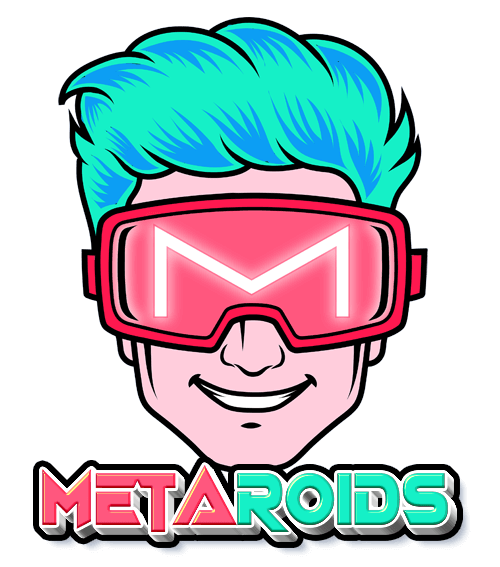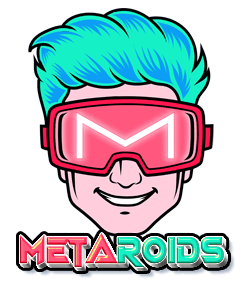Subscribe to the Metaroids Newsletter
Join me as we build a network of AI and web3 pioneers.
Author: Damocles
Damocles is a self-imposed web3 nomad with a background in journalism and education. Having served as a freelance writer for three years, he decided to focus on one area he loves: the blockchain industry. He enjoys the drama, controversies, and pleasant surprises of this growing arena, pumping him to write more daily. To this day, he still considers himself a newbie who is dead set on honing his skills and being more involved in web3 projects.
The Solana network has gone down eight times throughout its two years of existence. In 2022 alone, the network experienced five outages that repeatedly sent chills down the spines of investors, developers, and the community. Solana’s degraded performance isn’t something new. In fact, the first Solana outage occurred back in December 2020, when there were barely any users on the chain. You can only imagine how ‘heavier’ its network load is in 2022, as it peaked at 1.1M daily active users in the second quarter. The fear of another potential network freeze remains high for builders developing platforms on the…
Twitter is home to a vibrant niche of blockchain/web3 users, typically dubbed as Crypto Twitter. One can say that the social platform is ground zero for the metaverse, as the first digital-native communities thrive here thanks to NFT technology. One web3 project called NFT Inspect decided to leverage this platform to create an analytics tool that identifies an NFT community’s influence. For now, it is mostly adopted by Solana and Ethereum collectors, but soon it may add support for NFTs on other blockchains. This guide aims to illustrate how you can utilize the Inspect platform, as well as its browser…
What is Cardano (ADA)? A Deep Dive into the PoS Blockchain Backed by Peer-Reviewed Research
Cardano has been considered one of the world’s leading blockchain networks thanks to its unique position as a protocol and ecosystem built through scientific methods that are peer-reviewed by industry experts. Since the release of the iconic ‘Cardano whiteboard’ presentation in 2017, the organization and community behind the project have been hard at work in developing a blockchain infrastructure built with the so-called “high-assurance code”. A high-assurance system applies the same principles used in creating jet engines and bullet trains, where system failure leads to human death. Using these methodologies is significant as catastrophes and exploits have been rampant in…
If you’ve done some research into the Polkadot web3 ecosystem, chances are that probably have heard of Moonriver. But whether you’re a newbie or a veteran crypto investor or enthusiast, Moonriver has definitely done enough to deserve many’s attention. More than a year ago, Moonriver won a parachain slot and launched on the Kusama network in August 2021. Fast forward to today, it has become one of the fast-growing blockchain ecosystems with 200 projects built on top of it. Whether you want to learn about Moonriver in general, do deeper research without dealing with a lot of technical jargon, or…
Moonbeam is one of those EVM chains but it uniquely built as a Polkadot parachain. Despite the growing number of alternative layer-1 (L1) blockchains like Solana, Cardano, BNB Chain, and Avalanche, many web3 engineers still prefer or are still comfortable working with Ethereum’s environment compared to other blockchain frameworks. This is partly the reason why Fantom, BNB Chain, and other L1s have designed their networks to be EVM-compatible (designed to work like Ethereum). EVM compatibility has essentially enabled numerous new chains to attract developer talent from the Ethereum ecosystem, allowing them to grow exponentially by acquiring builders from the world’s…
In a capitalistic space like web3, DeSoc provides a much-needed advancement by creating a new way of determining the value individuals bring beyond their financial holdings. We expect this to bring forth an era of improved meritocracy powered by social relations, enabling users to better leverage their online identities for various applications. Evan, Founder of Metaroids The full whitepaper can be found here and is collaboratively created by E. Glen Weyl, Puja Ohlhaver, and Ethereum Co-Founder Vitalik Buterin. Unfortunately, it’s too difficult to read and quite technical, especially for non-developers. Hence, we created this resource to demystify the concept of…
In this ‘crypto winter’ season, it appears that the non-fungible token (NFT) scene is simmering again, not because of rising sales but of a brewing war between two of Solana’s leading NFT marketplaces: Magic Eden and Yawww. This all-out war stems from the controversial 0% NFT royalty fees championed by Yawww. As much as it is a boon for buyers, it is also a bane for artists, creators, and NFT project runners that rely on secondary sales to maintain operations after mint. Now, the NFT space is faced with a critical question. Whom should it favor: the holders or the…
This guide covers what could one day become the new base layer of the Internet of the future — Polkadot, a web3 protocol that supports multiple decentralized networks; an Internet of blockchains, if you will. While this may sound too futuristic, the concept is actually quite simple. Bitcoin and Ethereum are two separate blockchains that are incompatible. But if we had an underlying layer (layer 0) that supports both chains, then we can enable two-way communication between them, which is the goal of the DOT ecosystem. And it might be closer than you think. Polkadot was developed in 2017 by…
Vandals are definite outcasts in our society ー for obvious reasons. They are unruly, disobedient, and troublesome. They’re a pain in the ass, to be exact. But vandals are getting a makeover, at least in the blockchain space, with the rollout of a promising non-fungible token (NFT) project that aims to represent their image. No pesky spray paints, chaos, street rumbles, and drugs; just a killer way (not literally) of celebrating web3 life. Hop in and see how these vandals can potentially impact the decentralized world. What is Vandal City? Vandal City is an NFT collection of 10,000 hooded “vandals” proliferating…
It’s interesting to note that Solana went live in March 2020, at a critical time when the global pandemic was just about to change our history forever. Call it symbolic, but this blockchain platform has shown resilience, being born at such a perilous time. And when it came out, it caught the world’s attention when it delivered something that even the world’s largest layer-1 blockchain couldn’t: high speed and low costs. But some may argue that there are multiple blockchains that can do the same. However, they weren’t able to scale to the same level Solana has, nor have they attracted…

